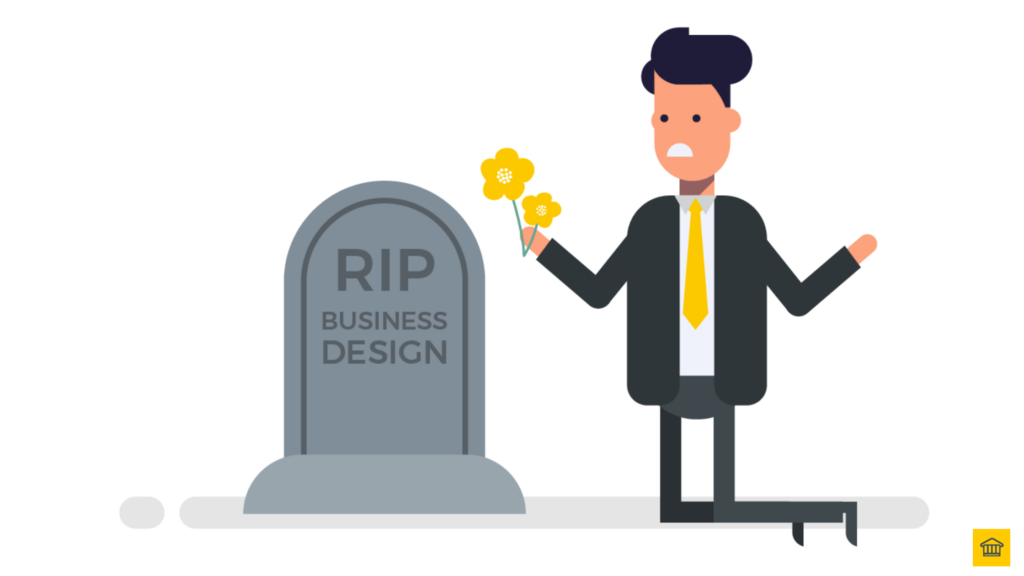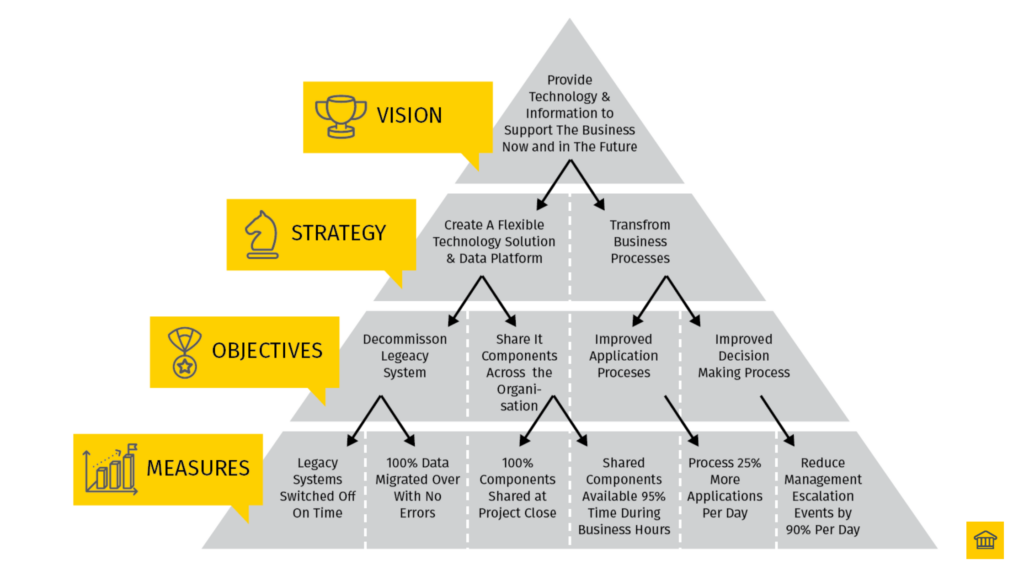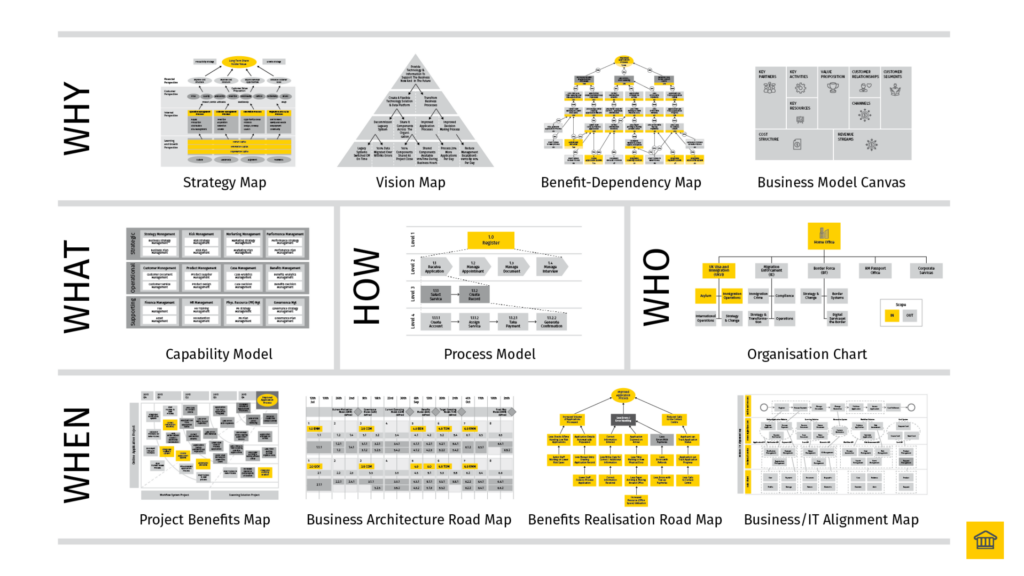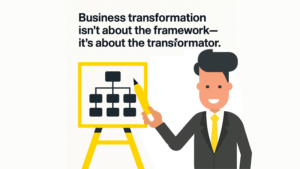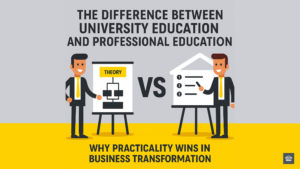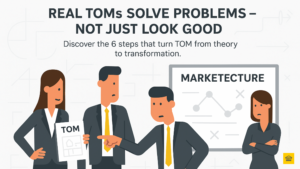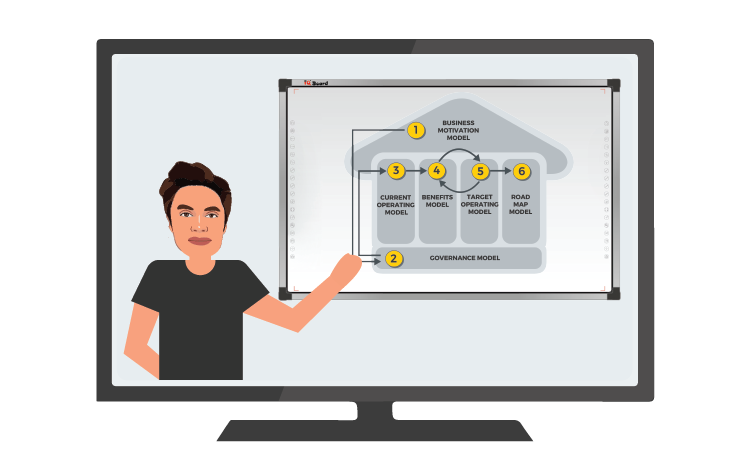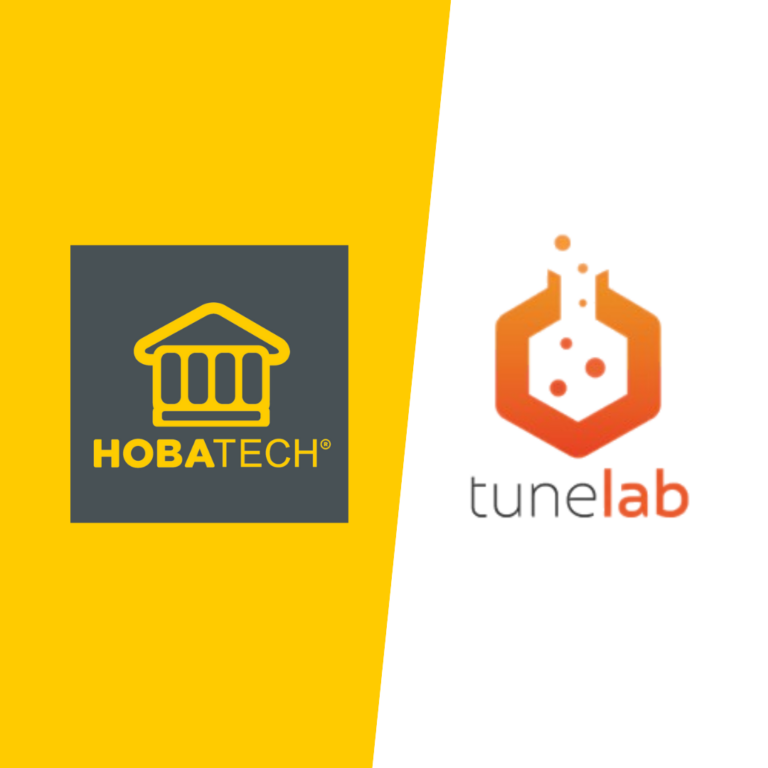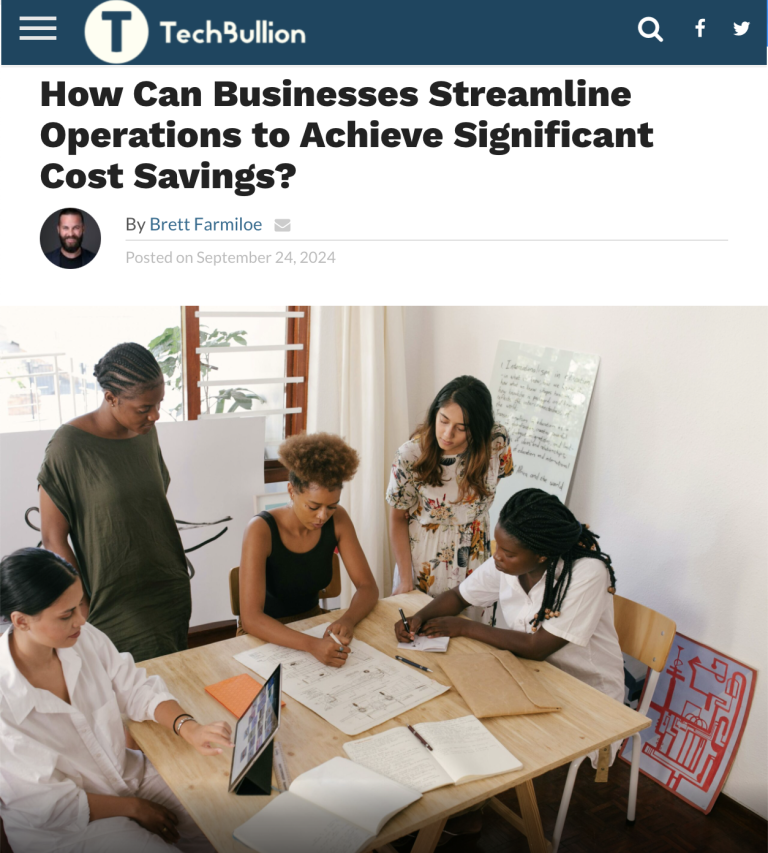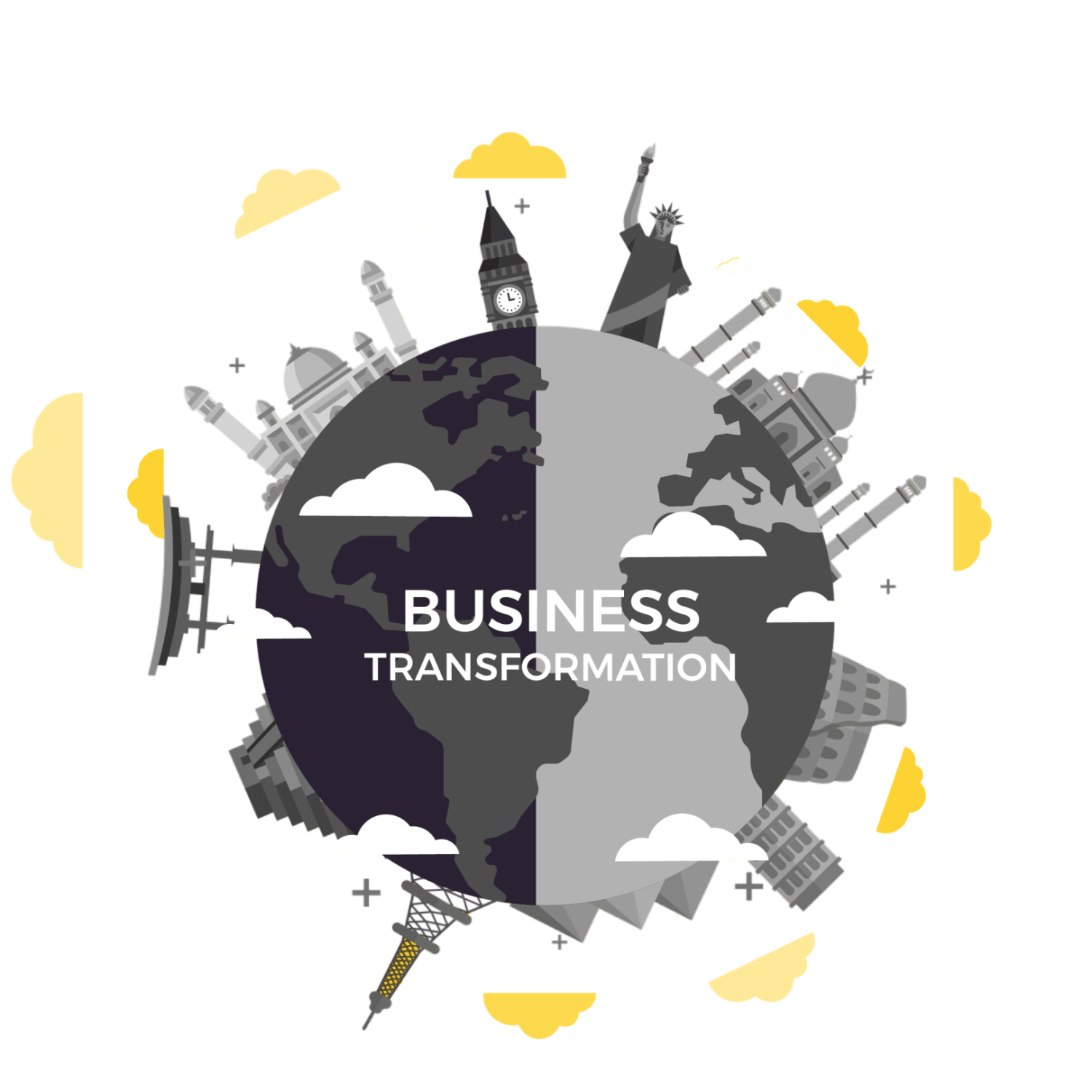If you read the newspapers, social media or check the key word search volume, business and digital transformation is a hot topic.
If you dig a little deeper behind the headlines, the stories don’t always have happy endings.
We covered this is a previous post the high failure rate (and causes of failure) of these business transformations.
In this post we are going to delve a little deeper.
In this post we will cover the 5 tricks you need to know before attempting your business transformation
(click the links to skip to the section below):
NB: Click the images to expand them 📸
Don't start with on design, start with focus
With the driver to change being either a direct result in advances in technology or indirectly by changes in User demands due to advances in technology, the focus by Organisations and consultancies assisting Organisations with their business transformation that uses these new technologies (namely digital technologies) is (mis)placed to focus almost entirely on the technology itself.
This problem is exacerbated when Business and Business Leaders claim they are unique, and require a “bespoke solution” to solve their unique problem, which is further helped along by Vendors that will quickly say “what system or application are we building?”
Clients are then quickly misled to jumping into “solution mode” and automatically start thinking about ‘what system or application are we building?”
But this is a trap.
Instead of jumping in and starting off at trying to answer the question “what shall we build?’ start off with focus.
Get everyone on the same page and common language on why you are doing the transformation in the first place.
This needs to be simple, but measurable. The tool for this is the VSOM (Vision, Strategy, Objectives and Measure) Map.
- Vision – why are we doing this?
- Strategy – what strategy(ies) will be used to realise the Vision?
- Objectives – what are the Objectives of achieving each strategy?
- Measures – What are the measure of success of each Objective?
All our fully editable templates, including this VSOM template is available here.
Don't focus on data, focus on insight
You heard the story “data is the new gold”.
Why? because used wisely, data is more valuable than gold (just look at Facebook).
But that statement is not entirely correct. Data itself has little value.
You need to extract it, interpret, and understand what it’s is telling you. These are the insights.
It is not the data itself you need, it’s the insights of what the data tells you. This is what you use to act on.
Just like in Business Design, “design” only is nothing.
If you can’t show what problem that design addresses, and a viable and practical plan to implement that design, that design is not worth the paper it is written on.
To avoid this trap, you need to understand what the drivers for change are and look to focus on developing and delivering changes that specifically address those drivers.
What are the drivers for change? The driver for any change is one thing – to realise Business Benefits.
A business will only consider implementing change if it results in a net benefit to the organisation, otherwise it wouldn’t or shouldn’t do it – it would lose time, money and miss opportunities if it did.

6-Steps to Business Transformation Success
WHAT THE TOP 30% OF ORGANISATIONS KNOW THAT YOU DON’T 👉

👏 "A business will only consider implementing change if it results in a net benefit to the organisation, otherwise it wouldn't or shouldn't do it – it would lose time, money and miss opportunities if it did" 🚀🧳 #VSOM #BusinessTransformation #BusinessBenefits
Heath Gascoigne Tweet
So how do you do that?
You first need to identify the data (i.e. the ‘benefits), and then you dig deeper to make them meaningful.
You need to quantify and define these benefits. You do with the Benefit Profile:
- Benefit Description – what will this benefit (i.e. outcome) change? What are the impacts of the change? E.g. Increased volume of applications processed
- Measure – how will you know when this benefit is achieved? What measures will you use? E.g. increased volume of applications processed, less errors, less inquiries to the call centre about the application status etc.
- Current value – what is the baseline measure today? E.g. 10k per month
- Target value – what is the future value (KPI)? 15k per month
- Start time – date you start measuring? E.g. 01-Aug-2019
- End time – date you stop measuring? E.g. 31-Aug-2019
- Value – what is the value of the benefit to the Organisation? E.g. Additional £500k sales per month (£100 per application fee x 5k new applications received and processed).
- Strategic Objective – which Strategic Objective this benefit contributes to? E.g. Improved Application Process
Only at this point, once you have identified and quantified the Benefits the Business intends to realise from the transformation, using the known (business and technology) changes that are in-scope for the programme, can you start having conversations about the priority and order these changes need to be built and implemented in order for the Business to use them and realise the Benefits in the order they need them.
Don't focus on documentation, focus on outcomes
More documentation is not going to make your digital business transformation work better or go any faster.
On the contrary, it will make you digital business transformation slow down.
So how do you know you have the right documentation?
To know you have the right documentation, you need to check that your documentation answers the 5 key questions. These are 5 questions that need to be address in any transformation:
- Why – Why are you doing this? What are the benefits?
- Who – Who is involved?
- What – What is the problem?
- Where – Where are the changes needed?
- How – How is the Business changed?
- When – When are the changes delivered?
Below is an example of the blueprints to use to help you get those answers:
For more examples, and how to use them, check out our book The Business Transformation Playbook here.
The documentation you use should answer one or more of those questions. If it doesn’t, you have to ask ‘why are you using it?’
To carry on developing documentation that doesn’t address those 5-key questions, runs the risk of developing something that is “interesting but not useful”.
Don't focus on one guy, focus on the team
No one-person will make (or break) your business, just like one-person will not make (or break) your digital business transformation.
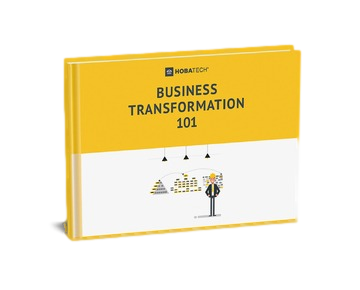
🎯 "No one-person will make (or break) your business, just like one-person will not make (or break) your digital business transformation" 🚀💼 #BusinessTransformation #HOBA #BusinessLedTransformation
Heath Gascoigne Tweet
In terms of make (or break) your business, you might have had a leader, if you look closer, it was a team that built the company. Just like your digital business transformation.
No one-person will make (or break) your digital business transformation. Why? because it was a team that enabled that transformation, not an individual.
On one of my last programmes, I was personally thanked for a job well done for delivering the TOM design and roadmap, in record time (6-months), something my not one, but two Big-4 predecessors couldn’t deliver in 14-months, and with teams of consultants.
Why? because it was a team that did it, but it wasn’t my team. It was the client’s team.
I requested at the start of the assignment a Core team, SMEs from the Business.
Why? because it is the Business that is the ones that know the ‘Business’ best, they know what works and what doesn’t work. They are the best people to solve the Businesses problems.
As I said in the Programme board where I presented and got the TOM and roadmap signed off, I reminded them:
“I said I had the framework. It your people who have the answers. It is my job to get the answers out of them”.
There are two added benefits of using the clients team, from the Clients perspective, it is not only cheaper for the client which increased their ROI, it accelerates the knowledge transfer (which if we’re honest, is the role of any Consultant, to transfer knowledge) and it creates Transformation Champions.
These Transformation Champions not only are the spokespeople from the program and project to the Business, which speeds up the adoption of the transformation:
- By using the Clients own people, the Business themselves that gain the vital experience and knowledge being a part of the transformation team and trained to transform. No co-dependency is created, and the skills, knowledge and experience is passed on from Consultant to the Business that the Business has the skills, knowledge and experience to manage any changes, and do it themselves next time the need arises.
- Transformation Champions increase the adoption of the transformation because the other members of the Business, who are impacted and affected by the changes the transformation is delivering look at “who is telling us?”, and when they see not only it is their “own people”, are that “they are one of us”, it helps to break down the barriers or resistance to change and speeds up adoption.
Don't focus on complexity, focus on simple
Richard Branson was not wrong when he said “complexity is the enemy. Any fool can make something complicated. It is hard to make it something simple”.
Looking for the Best Training to deliver your Business Transformation? Search no more!
- 30-Day Money-Back Guarantee
- Risk FREE

👏 "Complexity is the enemy. Any fool can make something complicated. It is hard to make it something simple" 💥#BusinessTransformation #RichardBranson
Heath Gascoigne Tweet
One of the biggest questions Businesses have with embarking on their digital business transformation is ‘where do start?’ or how to start?
It all boils down to one question – what is the process? And what is involved in the process?
The process to transform your business is like Richard Branson said, is relatively simple. 6-steps in fact.
These 6-steps are as followings:
- Step 1 – Focus. First get everyone on the same page and talking the same language (see point 1 above). This addresses the WHY question (i.e. why do this?).
- Step 2 – Control. Get the governance framework in place to control decisions, scope and risks. This answers the WHO question (i.e. who’s involved, what is their role?)
- Step 3 – Analyse. What is current state of the Organisation? This answers the WHAT question (i.e. what is the problem, and opportunities the Business is facing, today?)
- Step 4 – Evaluate. What are the Benefits the Organisation intends to realise out of the transformation? This answers the WHY questions (i.e. what are the benefits?)
- Step 5 - Design. What does the future operating model look like? This answers the WHERE and HOW questions (i.e. where does the business need to change? how is the business changed?), and
- Step 6 – Implement. When will these changes be implemented? This answers the WHEN question (e.g. what is the plans and roadmap for implementation?).
Conclusion
In conclusion, this blog post from Hoba Tech has provided valuable insights into the process of business transformation. It has shared five essential tricks that can significantly increase the chances of a successful transformation. These include understanding the need for transformation, setting clear goals, ensuring effective communication, fostering a culture of change, and leveraging technology.
These tricks are not just theoretical concepts, but practical tools that can be applied in the real world. By understanding and implementing these tricks, businesses can navigate the complex process of transformation more effectively and increase their chances of success.
Further Learning and Contact Information
If you found this post informative and would like to learn more about business transformation and other related topics, we invite you to explore further on HOBA Tech’s website.
If you’re interested in discussing how HOBA Tech can assist your business in its transformation journey, please don’t hesitate to contact us. We look forward to hearing from you and helping your business to thrive.
Hope you found some valuable insights for your business transformation.
Happy business transforming!
Sincerely,

Heath Gascoigne
P.S. If you want to join our Business Transformator community of 2,000+ like-minded Business Transformators, join the community on the Business Transformator Facebook Group here.
P.P.S. If you want to learn more about business transformation, check out The Business Transformation Playbook here.

